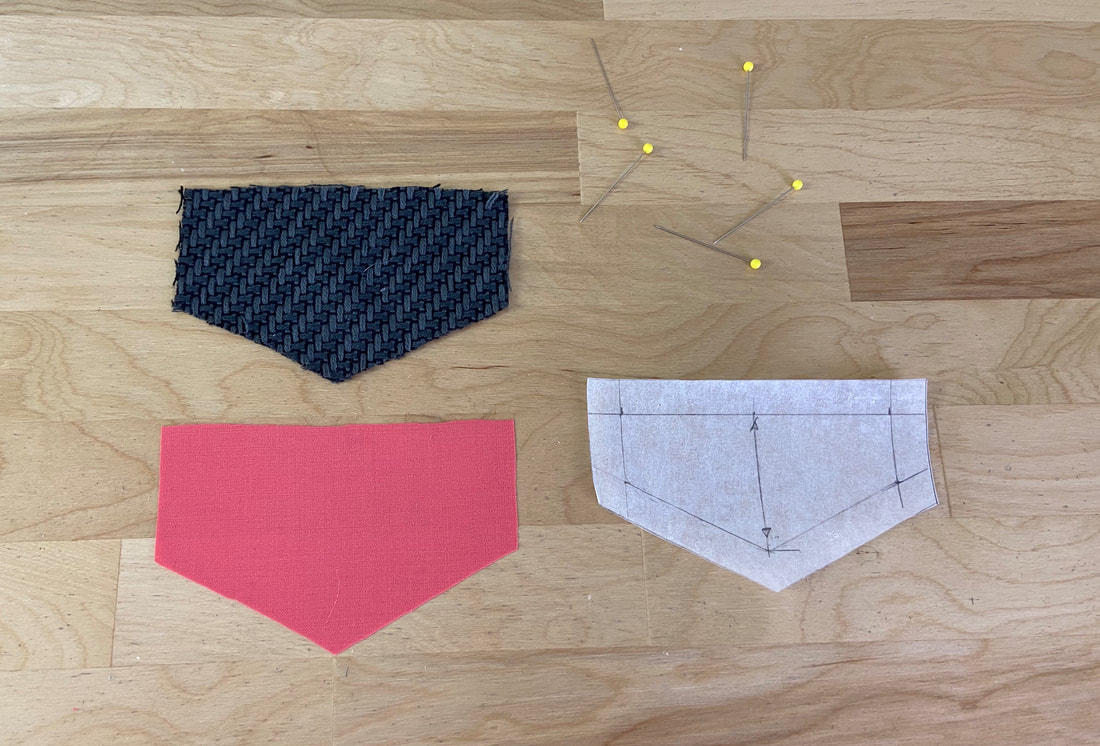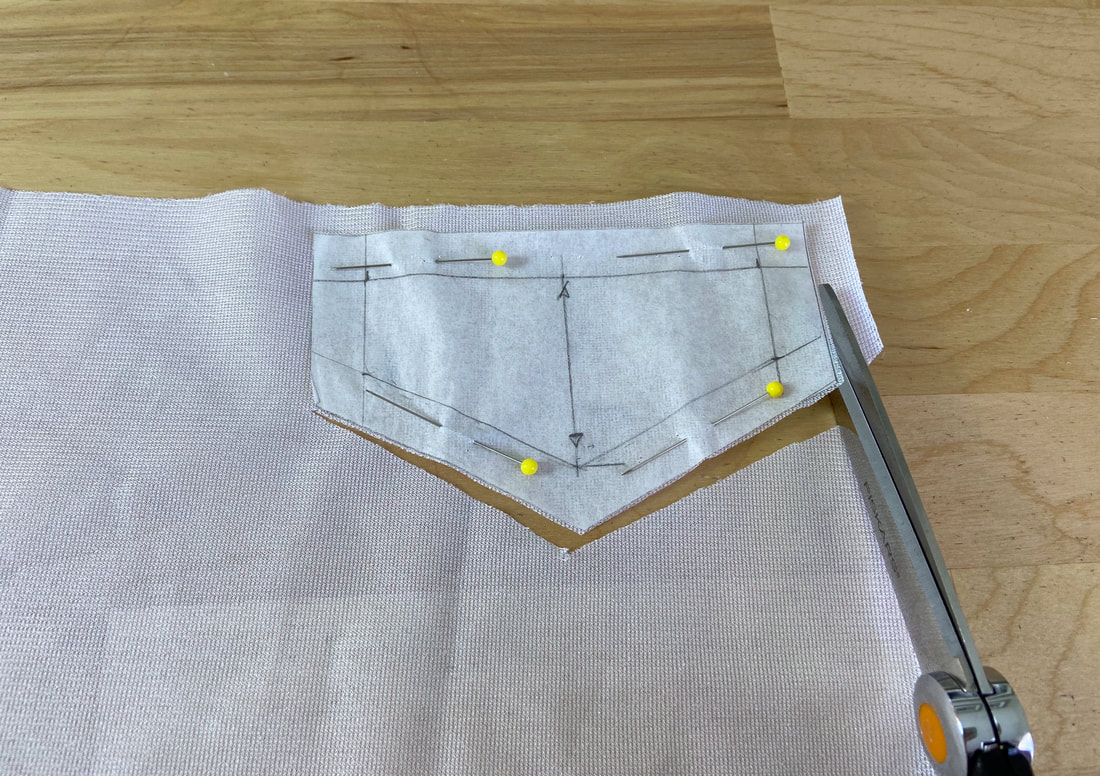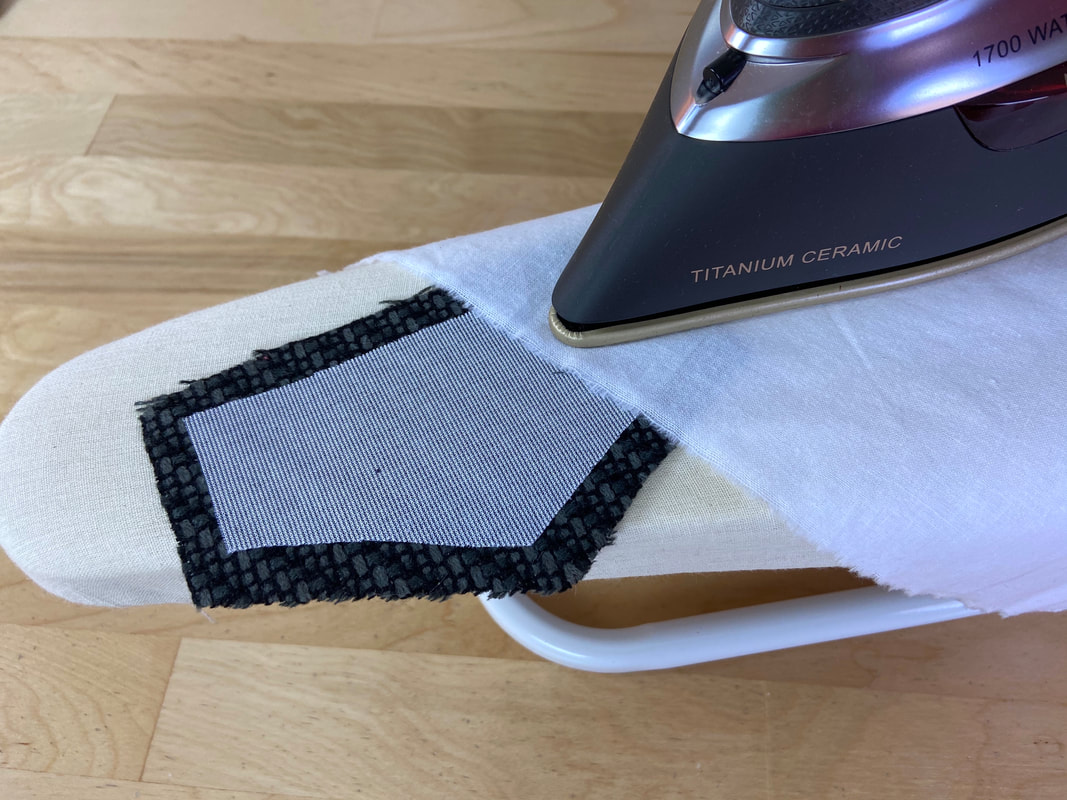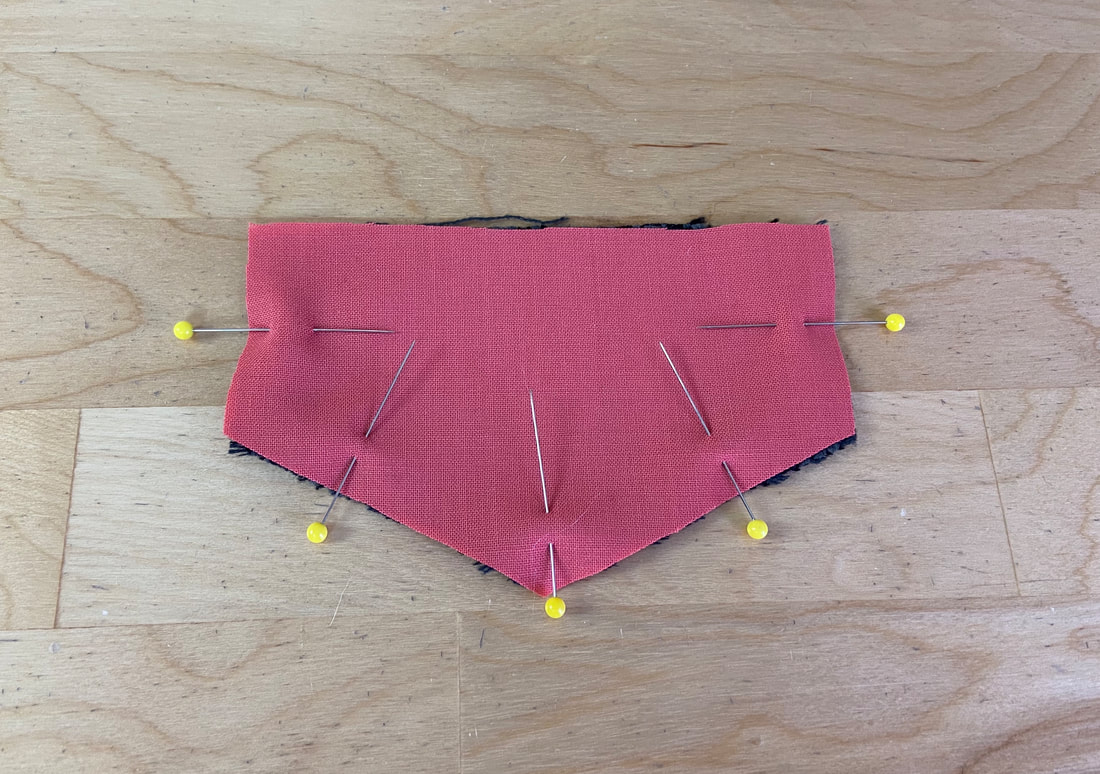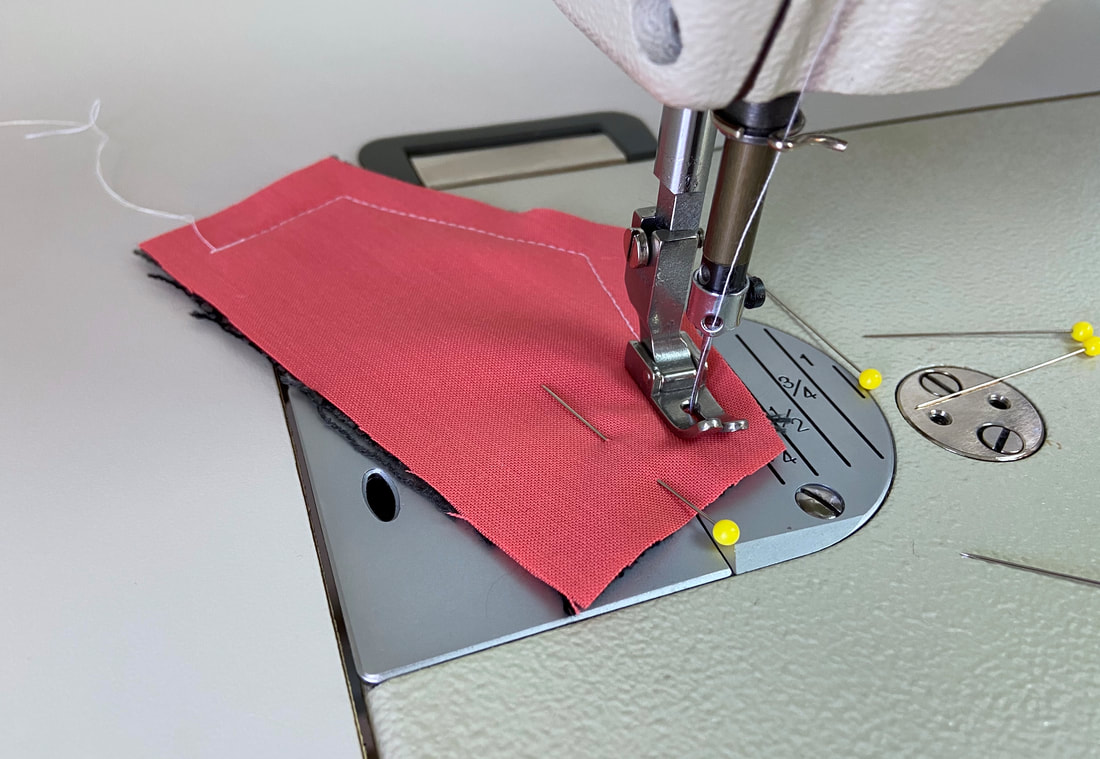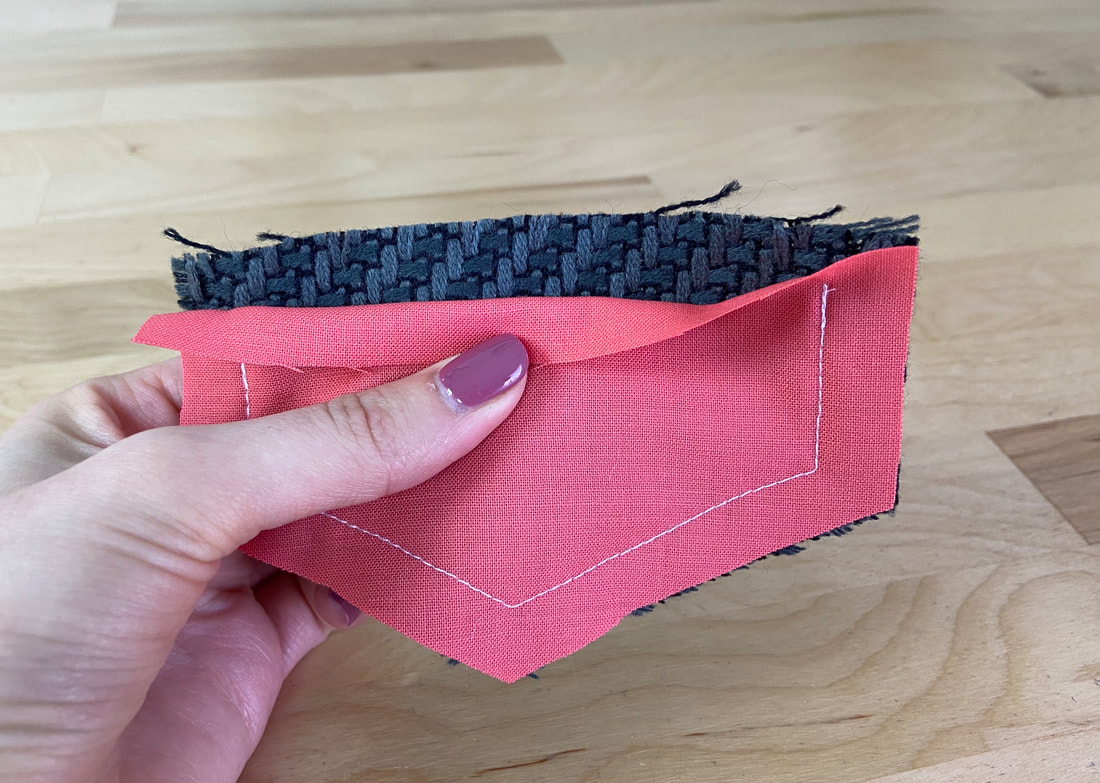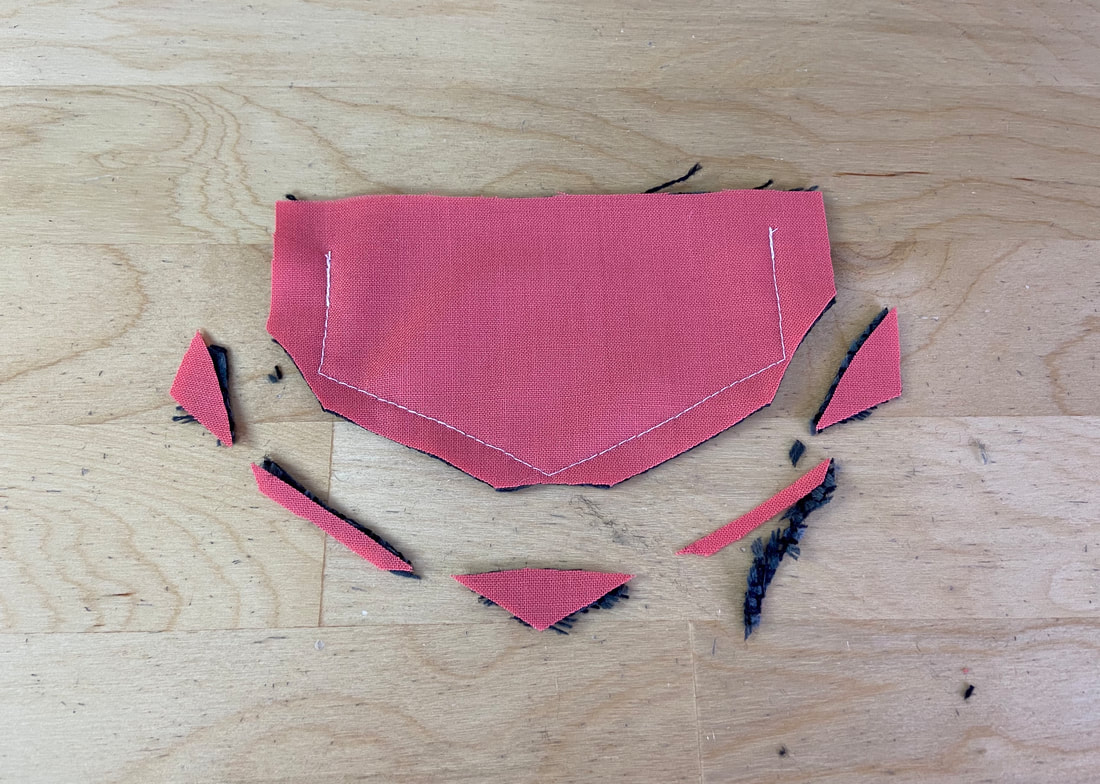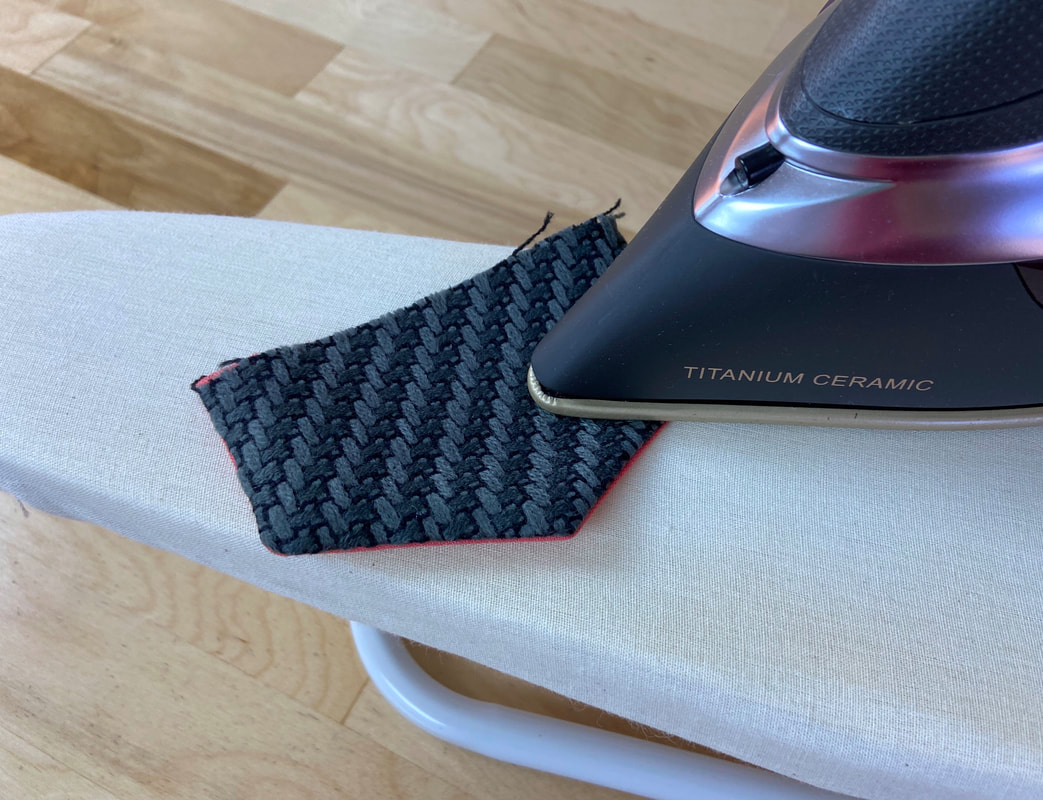How To Construct A Separate Lined Patch Pocket Flap
1. When sewing a lined patch pocket flap, you’ll need to cut two pieces: One corresponding to the pocket flap self and the other to the lining underneath.
Almost all pattern sets will provide the pocket flap pattern. If not, you can draft it at home using the patch pocket opening measurements.
Use the same pattern to cut both the self and lining pieces which should be identical in shape. If the lining fabric has a face side, it should be cut such that the lining layer is the mirror image of the self.
Almost all pattern sets will provide the pocket flap pattern. If not, you can draft it at home using the patch pocket opening measurements.
Use the same pattern to cut both the self and lining pieces which should be identical in shape. If the lining fabric has a face side, it should be cut such that the lining layer is the mirror image of the self.
The flap should maintain its shape and structure throughout the pocket's lifespan. For that reason, interfacing is used to back the self piece thus providing the needed structure without jeopardizing the fabric's flexibility and movement.
2. Use the pocket flap pattern (or the cut fabric piece) to cut an identical piece of fusible interfacing. The adhesive side should touch the wrong side of the pocket layer.
2. Use the pocket flap pattern (or the cut fabric piece) to cut an identical piece of fusible interfacing. The adhesive side should touch the wrong side of the pocket layer.
3. Trim the seam allowance off the interfacing piece (in this case, 1/2 along all edges) and fuse it to the wrong side of the self layer.
4. Align the lining to the flap self layer with face sides touching and insert pins perpendicularly along all edges but the top horizontal edge (which will be stitched to the garment).
5. Starting at 1/2” down from the top horizontal edge (unpinned), stitch the two layers together until you arrive at the other end. Stop the stitch at 1/2” down from the edge again.
Leaving a 1/2" opening on each end will help you attach the flap to the garment in a clean, professional fashion.
6. To eliminate bulk in the finished pocket flap, trim the seam allowance diagonally across all corners. If it is too wide and will add unnecessary bulk and thickness to the finished flap, trim the seam allowance about halfway down.
7. Last but not least, turn the flap on its right side and iron along all finished edges for a smooth, flat finish.

